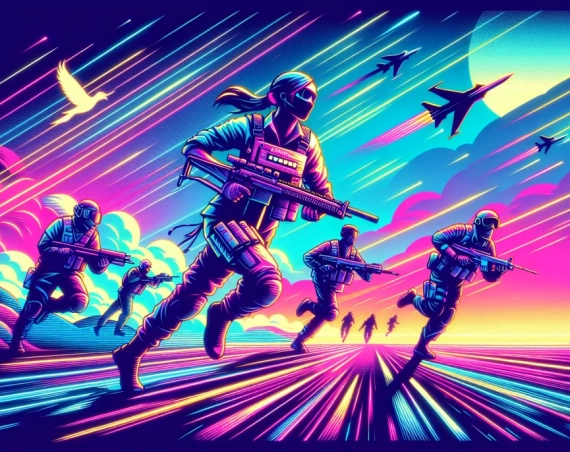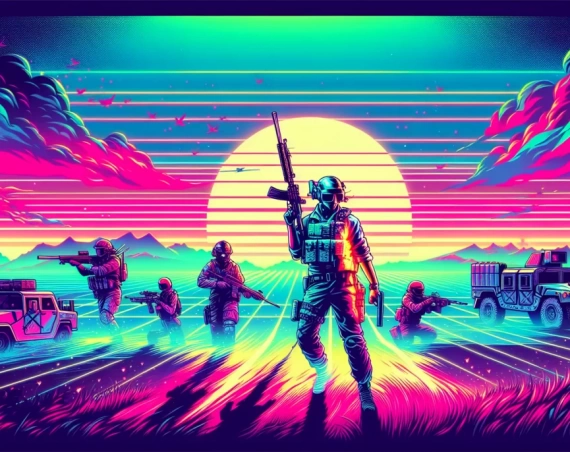
Inside the Difficult Development of Star Wars: The Phantom Menace PS1 Game
The Star Wars: The Phantom Menace PS1 game, released in 1999, stands in stark contrast to many celebrated Star Wars video games. While the franchise has produced numerous titles that are regarded among the best in gaming history, the adaptation of The Phantom Menace for the PlayStation 1 and PC struggled significantly and received a largely negative reception. This article explores the complexities behind its development challenges and the factors that prevented it from competing with contemporary titles like Jedi Knight.
Introduction: The Legacy of Star Wars in Gaming
Star Wars video games have built a remarkable legacy, with classics like Star Wars: Jedi Knight II – Jedi Outcast, Star Wars: Battlefront, and Episode I: Racer earning lasting fan admiration. However, the 1999 launch of The Phantom Menace PS1 game by Big Ape Productions, a LucasArts offshoot led by veterans Dean Sharpe and Mike Ebert, did not live up to this tradition. Despite some early promise — Big Ape had previously released Herc’s Adventures, which enjoyed mild acclaim — their work on The Phantom Menace is often remembered as a troubled endeavor.
Development Challenges Behind The Phantom Menace PS1 Game
Restrictions and Publisher Limitations
One key factor influencing the game’s underwhelming outcome was publisher LucasArts’ decision to limit Big Ape’s scope. To avoid overlapping with other Star Wars game projects, Big Ape was explicitly prohibited from developing content that competed with other contemporaneous releases, including the much more acclaimed Jedi Knight series and Episode I: Racer. This restriction meant the team had to steer clear of popular elements such as podracing despite it being one of the film’s most iconic scenes.
Technical and Resource Constraints
Beyond restrictions on the game’s content, the development team faced significant technical hurdles. Initially targeting the PC platform, the game had to support software rendering because LucasArts did not want to mandate a dedicated 3D graphics card, limiting graphical fidelity and performance. Furthermore, the original plan to develop for the PlayStation 2 was disrupted due to its delay, forcing the team to adapt the game to run on the less-capable PlayStation 1, leading to compromises in game design and graphics.
Mike Ebert recalled in a recent Retro Gamer interview, “From a design standpoint we had a lot of issues. We started building with very limited tools. I remember one designer using graph paper to plan background art because the level-building tool couldn’t import 3D models.” This manual, labor-intensive process further slowed development and impacted quality.
Lack of Access to Production Materials
Compounding these challenges, the development team had limited access to assets and details from the film itself. According to Ebert, most available material consisted of unintelligible blue screen shots from George Lucas and an early script, giving them little insight into the film’s actual visuals and pacing until late in production. This lack of clarity forced developers to make assumptions about story elements, often leading to inaccuracies or inconsistencies within the game.
Why The Phantom Menace PS1 Game Could Not Compete
- Competition with Established Titles: The game was not allowed to compete directly with star titles like Jedi Knight, which set a high standard for first-person Star Wars action with superior mechanics and design. As a result, The Phantom Menace felt inferior in gameplay and polish.
- Technical Limitations: The forced use of software rendering and PlayStation 1 hardware limited the game’s graphics and performance capabilities, making it less appealing during a time of rapid technological advancement in gaming.
- Restricted Content and Design Choices: Avoiding popular game elements and lack of oversight resulted in a disjointed and rushed experience.
- Rush to Market: Production was heavily accelerated to coincide with the film’s release deadline, often at the expense of quality and creative freedom.
Contextualizing The Phantom Menace Game’s Impact
While The Phantom Menace PS1 game struggled critically, the era itself was one of rapid evolution for gaming. According to a retrospective by Polygon, Star Wars games from the late 1990s to early 2000s showcased a diversity in gameplay styles, from racing to first-person shooters, which helped shape modern Star Wars gaming experiences.
Furthermore, Big Ape Productions’ challenges highlight a common theme in licensed game development: balancing publisher directives, technical constraints, and tight timelines often leads to compromised quality. Research published by the International Journal of Game-Based Learning in 2023 notes that many licensed games suffer from rushed production cycles with limited creative input, correlating negatively with critical reception.
Legacy and Lessons Learned
Despite its shortcomings, The Phantom Menace PS1 game serves as a case study in the complex interplay of factors affecting licensed games, especially adaptations of blockbuster films. It emphasizes that even with a strong franchise like Star Wars, development conditions, access to assets, and technical capabilities play a crucial role in a game’s success.
Conclusion
The development of Star Wars: The Phantom Menace PS1 game was fraught with considerable challenges — from restrictions imposed by LucasArts, technical and hardware limitations, to lack of production resources and a tight timeline to meet the film’s release. These hurdles culminated in a product that struggled to resonate with players and critics alike, failing to live up to the legacy established by other notable Star Wars games.
This history underlines the importance of clear project scope, sufficient development resources, and technological readiness, especially when adapting a popular film franchise into video game form. While the game itself did not endure as a classic, it remains a notable piece of Star Wars gaming history and valuable insight into challenges faced by licensed game developers.
Key Points Summary
- Publisher restrictions prevented Big Ape from competing with top-tier Star Wars games.
- Technical constraints forced software rendering and PS1 compatibility despite plans for PS2.
- Limited access to film assets led to reliance on assumptions during development.
- Rushed timeline meant development was focused on speed over polish.
- Legacy: The game is a cautionary example of challenges in licensed game production.


